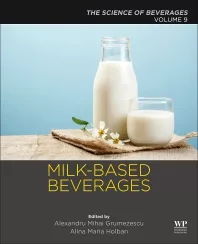Circana releases Compass insights
Market research firm provides update on 2024 performance, 2025 predictions
Chicago-based Circana released its new Circana Compass insights. The insights provide an update on the performance of the global food and beverage industry, as well as an outlook for the year ahead.
The market has trended according to Circana's 2024 forecast and its midyear update. In 2024, dollar sales have grown by 2.6%, price/mix by 1.6% and volume sales by 1.1%, the company reports.
As expected, price/mix growth this year fell below historical averages as modest increases in base prices continue. This was countered by increasing promotion rates. The mix of food and beverage products sold shifts as consumers trade down among existing products, while many consumers gravitate toward premium innovation in new items.
Circana notes that retail volumes grew, especially as post-pandemic wind-down stabilized, while rising prices when eating out prompted consumers to switch some volume back to at-home consumption.
Opportunities for growth
Circana Compass insights note that, while market volumes improved in 2024 compared with 2023 — and consumers remain committed to at-home spending — dynamics within the retail food and beverage space are challenging and will continue to moderate overall growth going forward.
"Consumers are driven by a demand for value, impacting both volume and price/mix growth," said Sally Lyons Wyatt, global executive vice president and chief adviser at Circana, in the release. "We're noticing that channels offering everyday value have become more influential. eCommerce solutions are also increasing convenience and price transparency, with online transactions now driving 35% of food and beverage dollar sales growth, despite holding only a 10% market share. We expect consumers to continue leaning into private label, which saw a 3% volume increase over last year versus a 1% decline from mainstream brands as they selectively choose premium brands (+3% volume) that deliver the right value.
"At the same time, unscripted consumer behaviors add complexity to the market dynamics," Wyatt continued. "We're seeing a shift from out-of-home dining, where traffic has fallen by 2%, to in-home meals, which rose by 1% in volume. Shopping patterns are also changing, with consumers making more trips, up to 8.9%, but buying fewer items per trip — as much as an 11% decline — and shopping more perimeter categories (+2% volume) versus center-store (+0.6%). As consumers adopted more selective buying habits, they purchase and stock up on some products less often, delay certain purchases and switch to alternatives as they reassess spending from necessity and make more room for discretionary items.”
Predictions from 2025
Looking at the year ahead, Circana anticipates that the food and beverage industry will see growth in dollar sales between 2% and 4%. Price/mix will grow between 1.5% and 3.5%, reflecting continued modest base price inflation, stabilizing promotion levels and ongoing demand for value, including more premium benefits at the right price, the company adds.
Uncertainty around potential new government policies introduces a wider range of possible impacts on industry costs, from tariffs impacted wages to import costs. This requires close monitoring by beverage brands to plan accordingly. Circana notes that both retailers and manufacturers face stressed margins and increased public scrutiny on grocery prices, which requires them to balance value and incremental offerings.
Volume sales growth in 2025 will likely range between 0% and 1%, the company suggests, as it expects continued strength for at-home occasions with foodservice traffic improvement (e.g., more employees returning to the office). Ongoing channel migration and the shift in shopping behaviors with a value mindset will continue shifting where the volume growth opportunity sits, the company shares.
Based on consensus from macroeconomists, Circana’s outlook anticipates a moderate slowdown in economic conditions, including softer growth in 2025 than in 2024 for gross domestic product (GDP) and disposable income, a slightly weakening job market and stable consumer confidence.
If economic conditions outperform expectations, Circana suspects there might be a slight decrease in volume growth as consumers dine out more, paired with a stronger price/mix driven by demand for premium experiences. Conversely, weaker-than-expected conditions could reinforce in-home meal preferences, but reduce willingness to pay for premium products, the company adds.
Global outlook
The market research firm expects food and beverage value sales across the EMEA region to grow to reach around 4% in 2025, which follows a similar trend to 2024.
Driven primarily by a 3% increase in price/mix, Circana anticipates that unit sales will rise between 0% and 1%. An important trend in EMEA is the expanding presence of generic and private-label brands, the company adds, which now account for 39% of food and beverage sales — up from 37% four years ago.
Circana projects unit sales to trend upward by 1.6% in the APAC region, following a flat performance in 2024. The increase, combined with slowing price/mix trends, will drive 4% value growth in 2025. This reflects a positive outlook for consumer confidence and is driven by anticipated interest rate cuts and a gradual shift in spending from foodservice to retail.
The company’s food and beverage outlook is developed using econometric demand models leveraging Circana’s Demand Forecasting Platform. The company shares that more than 100 variables are analyzed to test hypotheses for each model, supported by a machine-learning algorithm and more than 500 random forest models to determine the most important casual factors. Forward-looking input variable assumptions are developed using historical trends and insight from industry experts, it adds. The platform allows Circana to run scenarios and estimate future sales, breaking them down by their driving factors.
Looking for a reprint of this article?
From high-res PDFs to custom plaques, order your copy today!






